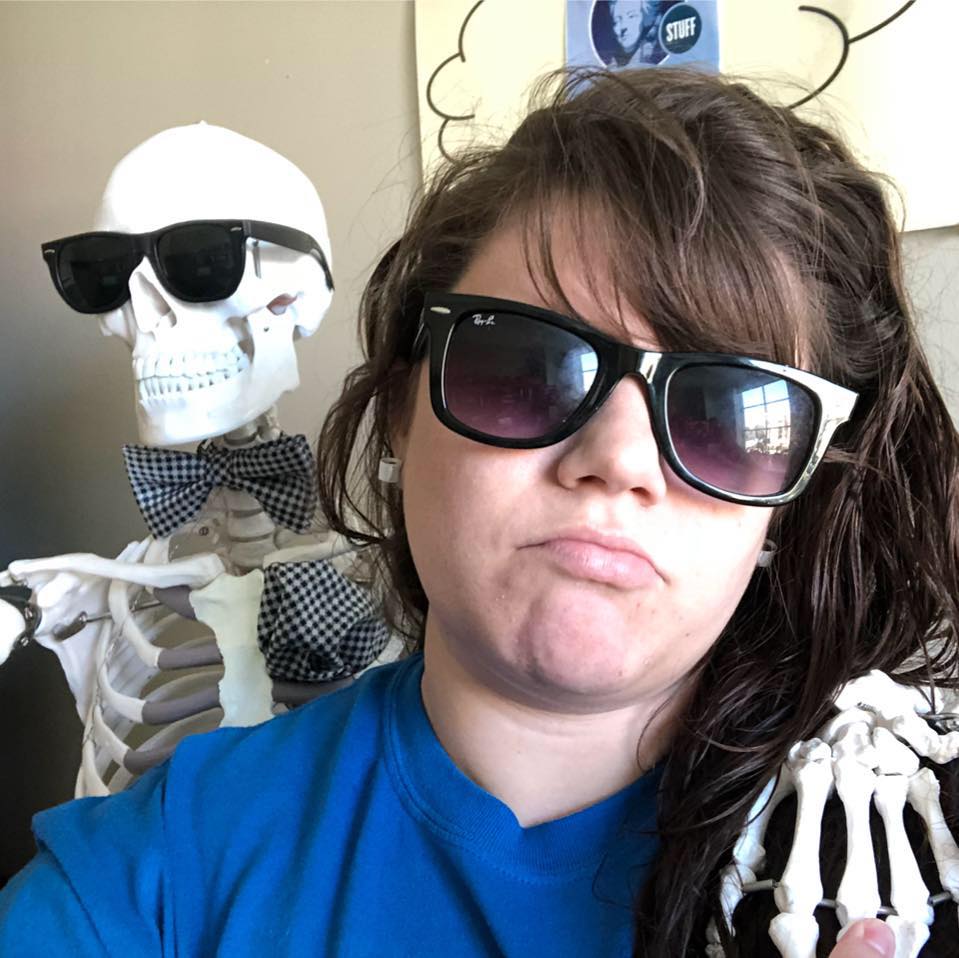
Purchase Tickets
Personal Reflections on the Invasion of Normandy
June 7, 2024
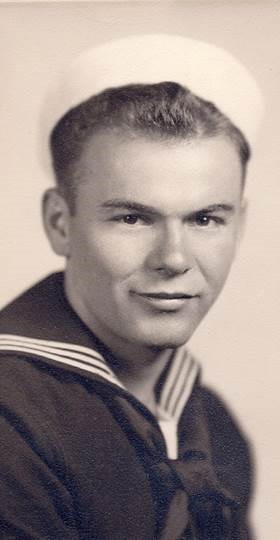
June 6, 1944, is certainly a date the world remembers when 73,000 Americans joined the Allied forces for one of the greatest military missions ever. On that night 80 years ago, President Roosevelt asked the Nation for prayers as these men “set upon a mighty endeavor, a struggle to preserve our Republic, our religion, and our civilization, and to set free a suffering humanity.” This day is certainly one I learned about in school, and certainly one of great strength, victory, and loss – but never one I thought I had personal connections to until I did a little research.
We always knew my Pap served in the Navy in World War II but never knew what he did or where. We had precious few photos, no paper records, and his uniform. Pap went to great pains to avoid the topic, always. Maybe when he returned home to central Pennsylvania, he shared his story with his father, but his father passed just nine months later. No stories were ever told to my Gram or my uncle who also served in the Navy. Such a profound silence on something which so clearly impacted him, that he never traveled away from home again. After my uncle passed, my family had a renewed interest in finding more of his story, where we started with his official Navy Personnel File from the National Archives.
A few months later a hefty manila envelope arrived in the mail from my parents. Inside were paper copies of everything, a glimpse into his larger experience, and a story that I am just starting to scratch the surface. A story that touched nearly every part of the war, and started with a future sailor from Pennsylvania reporting first to Indiana.
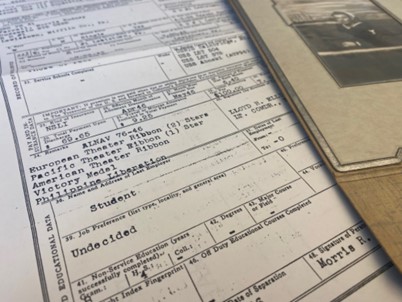
Image of Morris Farrell’s honorable discharge paperwork and Navy portrait. Peightel/Farrell Family Collection.
Just over 1,000 Landing Ship Tanks (LST) were built for World War II, where nearly 400 were built from the shipyards in Jeffersonville and Evansville, Indiana. From a small farming town in Pennsylvania, Pap’s wartime experience started here.
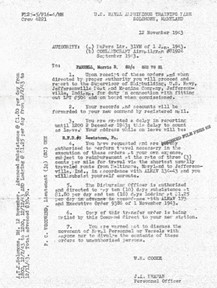
Copy of transfer order directing Farrell to report to the Supervisor of Shipbuilding, U.S. Navy, Jeffersonville Post and Machine Company, Jeffersonville, Indiana for duty in fitting out LST #504.
Pap’s Navy Personnel File told me a lot, but it didn’t tell me what I wanted to know. I wanted to understand more about his personal experience, more about what he did, and what he saw. I knew it was going to be a tall order of historical research given the vastness of his service, but we needed to know. I needed to know. I dug in hard, and found living crewmates, children of other sailors onboard, diaries, menus, photos and more stories.
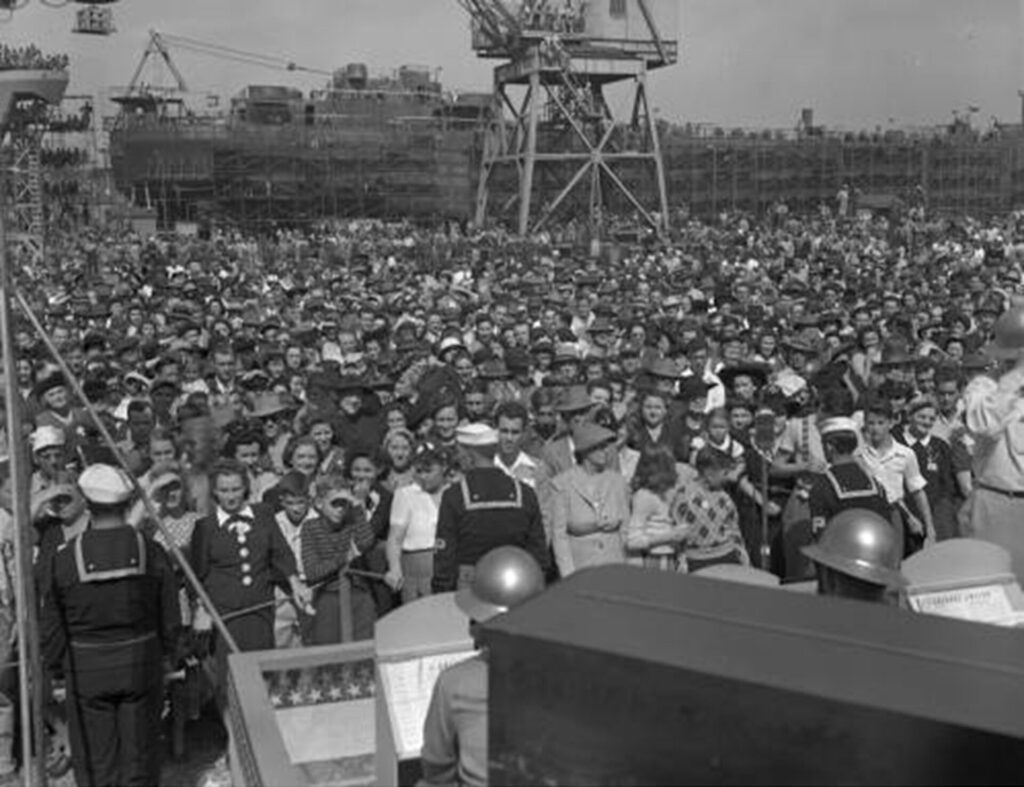
Crowd at the Evansville shipyard. Evansville’s riverfront area was utilized as a shipyard during World War II. Evansville was known for producing Landing Ship Talks (LSTs), which were ships that could carry vehicles and troops directly onto shore. Indiana Historical Society.
The LST Story Evansville Shipyard. For more information about the production of LSTs, visit the USS LST Ship Memorial Inc., where you can tour the only operational LST in WWII configuration afloat in US waters, LST – 325. lstmemorial.org. Video produced and narrated by Tom Carr.
After almost two weeks in the greater Louisville and Jeffersonville area, the USS LST-504 shoved off down the Ohio River, into the mighty Mississippi, further outfitting along the Gulf, up the east coast to New York City and Boston, then Nova Scotia, and then finally in March 1944, into the Atlantic Ocean for two weeks to reach England.
The first day after setting sail there was boiler trouble, and frigid temperatures, storms, and even a hole on the starboard side. For the entirety of April 1944, they bounced around different ports in England, and on the 5th (my Pap’s 19th birthday), they began beaching operation practices in preparation for Operation Neptune, the naval component of Operation Overlord. D-Day. On May 1 they loaded 290 soldiers and 54 trucks onboard for a dry run, setting sail for a time, and then anchoring somewhere in the channel. For the rest of May, they continued to practice.
Navy historian Samuel Eliot Morrison wrote, “Everything had gone well so far, but there was the usual feeling of “anything may happen” that is characteristic of an amphibious operation. Everyone had been so impressed with the need for secrecy that sailors on deck spoke in whispers, as if the Germans could overhear.” History of the United States Naval Operations in World War II
With such fanfare of farewells and crowds in the shipyard, the launch of this mission was so starkly polar. There was no music, no bands, no crowds or flags, only the local women, old men, and children offering a last cup of tea and prayer. In the dark of night thousands of engines roared to the water’s edge, and men marched to their reports, and thus began the great invasion to liberate France.

Copy of Jackson Homer Jones’s Diary, sailor onboard USS LST-504. Used with permission from Jackson’s family.
On June 6, crewmate Jack Jones simply wrote “D-Day.” They passed three drowned sailors floating in the surf, one young man with bright red hair, and they lost all their small boats but one. Another sailor, Jack Riden (also from my hometown) wrote, “Hit Easy Red Beach at Omaha… H +12 only men, LCT’s and LCI’s had hit beach. The beach was really hot. German 88s and mines- we carried past 1st Div., anchored evening, and started to unload rhinnos. Night came. O! How I hate to see that evening sun go down. German planes came – bombs dropped – one just off our stern. Too close. Shrapnel hit the ship. Saw a plane shot down off our ship.”
Over the course of the next few days, the LST-504 traveled the channel multiple times transporting countless trucks, ammunition and men, and on the return trip they ferried German prisoners of war to England. These prisoners of war were barely teenagers, hungry and thin, and completely terrified – and made a lasting imprint on the sailors onboard. In front of them LST-499 was attacked and sank.
From here the LST-504 went on to support other invasions, cruised through the Mediterranean and suffered significant damage after a collision with another LST, diverted to Bizerte, Tunisia for repairs, and then sailed on to Sicily in support of the invasion of Southern France.
As I continue to learn more and more about my grandfather’s Navy experience, the danger, the constant close calls, terror and violence, the more I am reminded of the humanity to be found in it. The games, movies, boiled dinners, sweet treats, and nights out on precious liberty. I found comfort in these details, finding moments where young men can just be young men, and serve as a reminder to look to the good moments, laughter, and kindness when things are hard. It was a lesson I needed to live while working through this research, and one I continue to practice today.
Unfortunately, my Pap was pretty lost to Alzheimer’s when I was just three years old. This journey of historical research introduced me to a man I never really got to know. And through understanding his skills, strengths, experiences and friendships, our family has come to know him so much more.
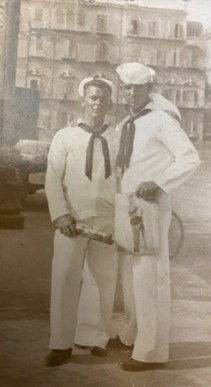
Morris Farrell and Jim Davidson, both of Mifflin County, Pennsylvania. Peightel/Farrell Family Collection.
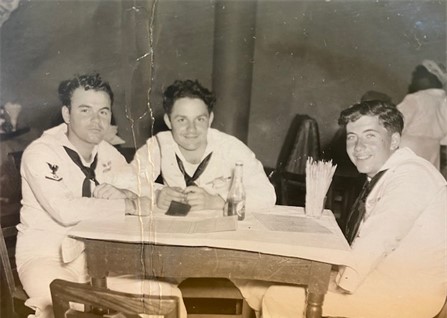
Morris Farrell, left. Far Americas. Other sailors not confirmed. Peightel/Farrell Family Collection.
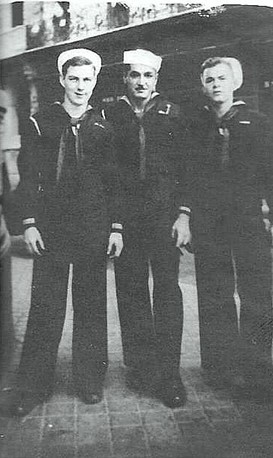
Donald Richard Jack Riden (left), S2C2 and cook, Nick Ferenz, Coxswain, and Morris (Buzzy) Farrell, Coxswain. All from Mifflin County, Pennsylvania. Given with permission from Carol Ann Riden.
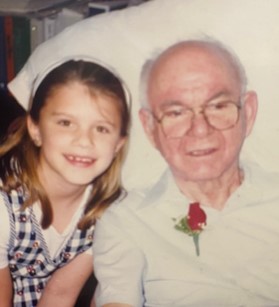
Lauren with Pap (Morris Farrell). 1999. Peightel/Farrell Family Collection.




